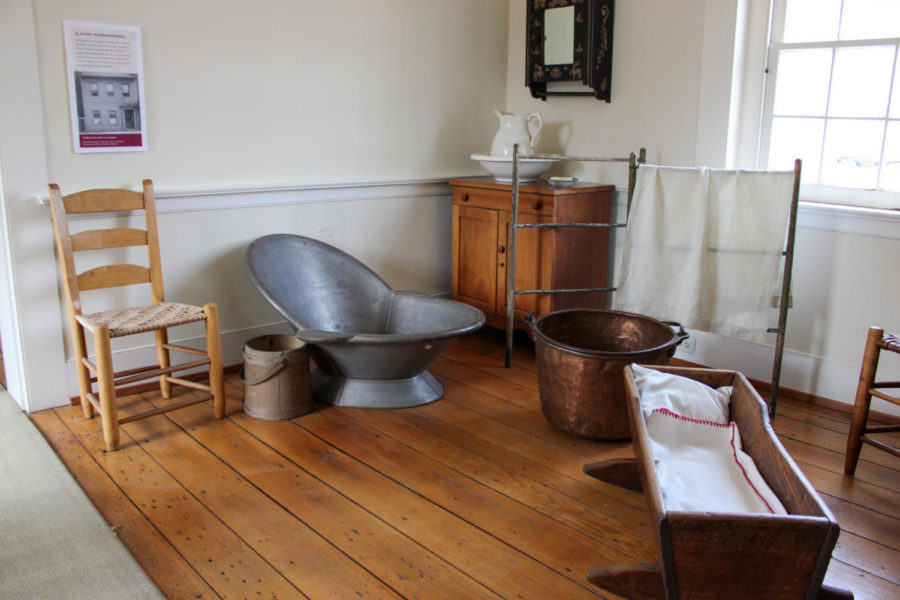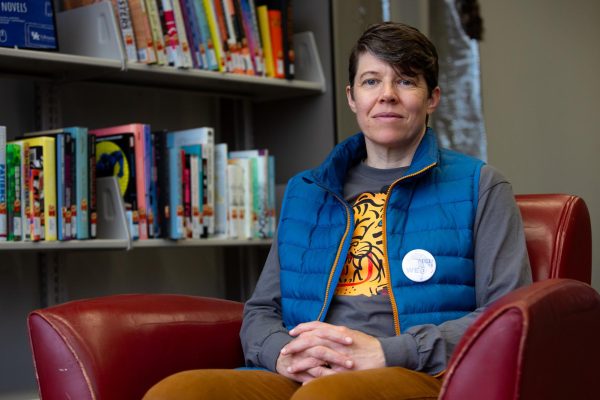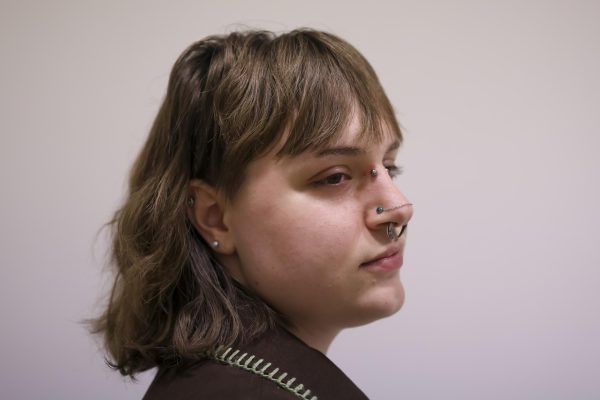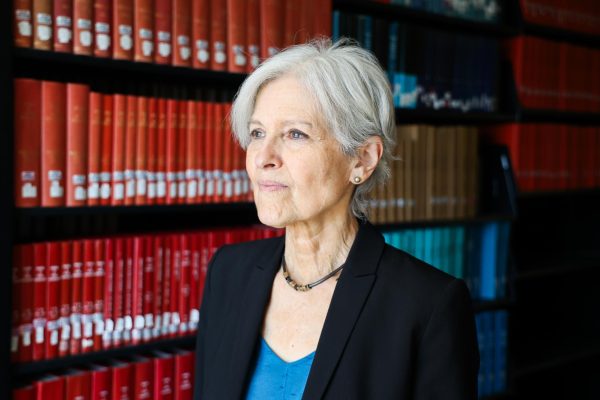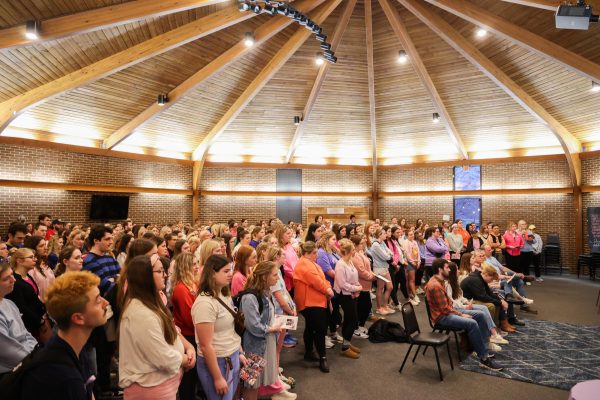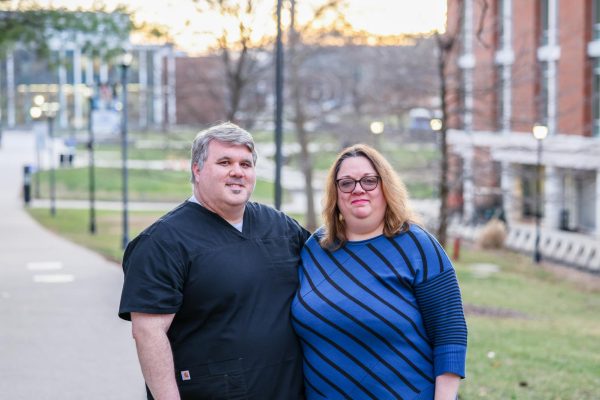First Lady of Lexington: Inside the Mary Todd Lincoln House
A recreation of a child’s washroom is displayed in the Mary Todd Lincoln House on Wednesday, March 21, 2023, in Lexington, Kentucky. Photo by Bryce Towle | Staff
April 4, 2023
All across the Bluegrass, Kentucky hosts many historic sites, with many of them recognizing the state’s equestrian or bourbon industries.
But in light of Women’s History Month, the Mary Todd Lincoln House stands out for many reasons.
Born in Lexington on Dec. 13, 1818, Mary Todd was the wife of the United States’ 16th President Abraham Lincoln. Here in Lexington, visitors can find her historic home located on West Main Street, not far from the newly renovated Rupp Arena.
The Mary Todd Lincoln House has been a part of Lexington’s history since 1806 and was once the home of the Todd family. In 1977, the home was opened to the public as a museum.
The house is open to the public from 10 a.m. to 4 p.m. Monday through Saturday from March 15 to Nov. 30.
“We have almost 14,000 people who come through in that eight-and-a-half-month period. So quite a few people and we have people from all over the country and other countries as well. So usually we hit all 50 states,” Gwen Thompson, executive director at the Mary Todd Lincoln House, said.
But even outside of its public opening period, work at the museum doesn’t stop. The museum employees remain working during these months in preparation for events such as Presidents’ Day and Mary Todd’s birthday.
“Operating the museum on a daily basis, and serving all of our visitors, is one aspect of what we do. We also offer additional programs, educational programs and public programs,” Thompson said.
Those who have a passion for history, guests and historians alike, will find inspiration inside the walls of the Mary Todd Lincoln House. Those who tend to the museum play a large role in sharing the house’s history with visitors.
The site allows history lovers to apply for positions at the museum, often as a docent – which Polly Elam, who works at the museum, called “a fancy word for a tour guide.”
“I knew that I wanted to try out museums to see if I wanted to go to graduate school for museum studies. So I saw that they had openings for docents. And so I applied,” Elam said.
Elam described how she “didn’t know much about her,” referring to her knowledge of Lincoln and the house before becoming a docent.
The Mary Todd Lincoln House lends reading material to employees in order to enhance their knowledge on subjects pertaining to the museum.
“I am a big consumer of knowledge and learning and so here they give us reading material to read if we want it and things like that to supplement our knowledge,” Elam said.
Others like Thompson, who have worked at the Mary Todd Lincoln House for a longer period of time, have extensive knowledge of subjects pertaining to the life of Lincoln.
Thompson described the life, experience and passion of Mary Todd in great detail, starting from her birth in the Todd family’s original home located near 511 W Short Street. The Todd family moved to the now historical site when Mary Todd was 13.
While the life of Mary Todd is a driving factor in visits to the museum, the home is the site of a November 1847 visit from Abraham and another reason for its significance.
“(Mary) was born here in Lexington, and they moved into this home when she was 13. She was born here, but her birthplace no longer stands,” Thompson said
Thompson said that, while the Todd family did own slaves and is historically recognized as a privileged family, Mary Todd and four of her siblings chose to side with the Union during the Civil War.
Mary Todd’s mother grew up in a large family with 13 other siblings. She died when Mary Todd was only six years old. Their father, Robert Smith Todd, quickly remarried Elizabeth “Betsy” Humphreys.
Mary Todd was considered a reserved child, remaining unconfined during her pursuit of extensive education.
“She really had an impressive education. She was fluent in French, which she learned … at school of Charlotte Mentale, which was about two and a half miles from here,” Thompson said.
Mary Todd’s high education and knowledge of different subjects would have led others to consider her to have a “masculine mind” by 1800s standards.
“She would have learned subjects that in that time period may have still been considered more male subjects, such as geography and literature, mathematics,” Thompson said.
With nine years of schooling under her belt, Mary Todd was fluent in French, well-versed in politics and known for reading newspapers.
Mary Todd left the Todd family’s home in 1839, moving to Springfield, Illinois, with her sister Elizabeth, where she met then young lawyer Abraham.
According to docents at the Mary Todd Lincoln House, the first time Mary Todd met Abraham was at a festive party, where he said to her “I want to dance with you in the worst way.” Later that night, Mary Todd told her cousin that “he certainly did.”
The couple got engaged not long after in 1840, but Abraham inexplicably ended the engagement in early 1841. The couple didn’t reunite until the fall of 1842 .
The Lincoln’s had four children: Robert Lincoln, Edward “Eddie” Lincoln, William “Willie” Lincoln and Thomas “Tad” Lincoln.
While the expectation of women during the 1800s was to be a wife and have children, docents and employees of the museum said that Mary Todd did much more.
“Mary Todd Lincoln was a woman in the 1800s and while she was in a position to, you know, have a lot more opportunities than other women of her day, she still was confined by the gender norms, expectations, and the constraints of her time period,” Thompson said.
After Abraham was elected president in 1861, it didn’t take long for Mary Todd to use her high level of knowledge in pursuit of her own cause.
“She was the First Lady during the Civil War, so she was involved with soldiers and wounded soldiers, so she would visit wounded soldiers in the hospital. She would take them gifts of flowers or fruit and read them letters and things of that nature,” Thompson said.
Mary Todd vehemently opposed the confederacy and was considered to be a tireless supporter of the Union.
“Mary’s cause was supporting the efforts of the Civil War by supporting the soldiers,” Thompson said.
Kentucky’s first First Lady set some expectations for future First Ladies as her cause was valiant. Things are not much different for First Ladies today, according to Thompson.
“The role of the First Lady has really not changed a lot over the years. Which is interesting that the expectations and the role of the First Lady have not really evolved a ton,” Thompson said
After the assassination of Abraham in 1865, Mary Todd wore black for the remainder of her life as a constant reminder of mourning for her husband. She passed away in 1882.
Mary Todd’s rich history remains deeply rooted in Lexington at her former home, highlighted by those that work there to show her significance.
Those who wish to learn more about Mary Todd and her house are encouraged to visit the site during its operating hours or go to the museum’s website.









































































































































